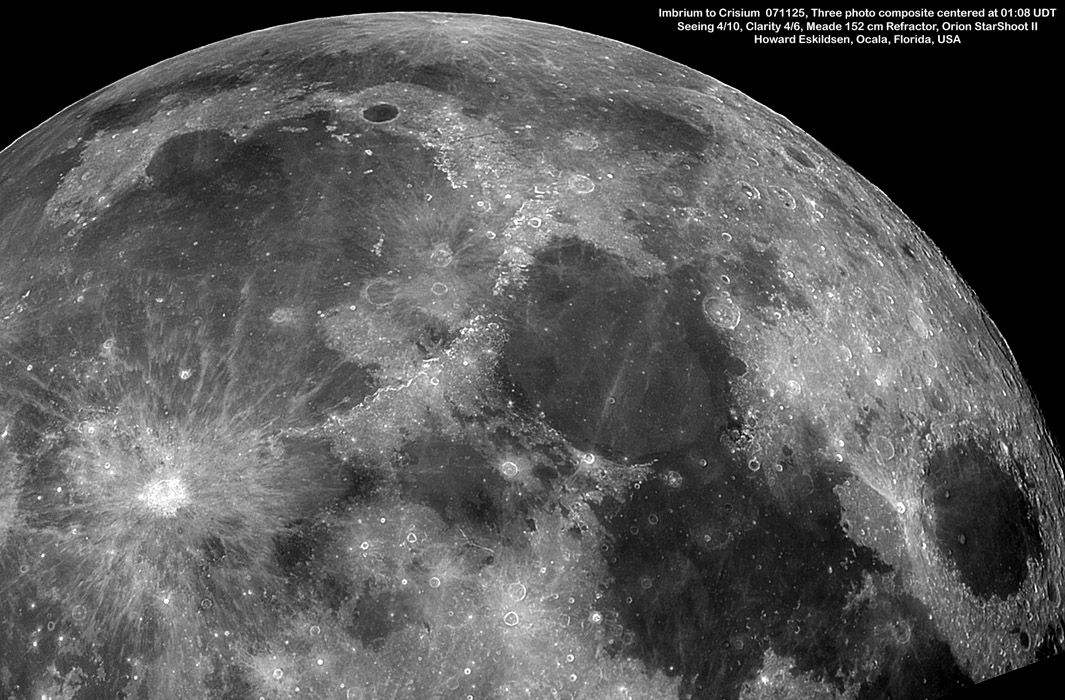
image by Howard Eskildsen, Ocala, Florida
During much of the lunar month, many imagers strive for high res closeups of individual features. But at full Moon, if they image at all, observers tend to make mosaics of the entire Moon. Howard has found a middle ground of broad regional imaging that provides a treasure hunt of interesting albedo features that deserve more detailed studies. Here are some random detections of bright and dark markings. The famous dark halo crater Copernicus H is visible at about the 5 o’clock position near Copernicus, and three or four other small ones are almost as easy to spot. But I never noticed that Gambart (about 2 Copernicus diameters beyond H in the same direction) is surrounded by a thin rim of darkness. Other dark patches worthy of further investigation occur near Hyginus. The crater itself is at the center of a dark nimbus which appears to follow the adjacent rille a little to the east. Rimless Hyginus is one of the largest of the Moon’s volcanic collapse craters - is the surrounding ebony hue pyroclastics? Near the east end of the Hyginus Rille is a roughly circular dark patch named Hyginus S. Perhaps there used to be a crater there, but there isn’t now, just a rare case of an albedo feature with a designation. To the west of Hyginus the bright-rimmed Ukert with its triangle-shaped floor is a conspicuous landmark to aid navigating in this bright region. And don’t forget rays. Are those that stretch from Timocharis towards Plato from Copernicus? If so, why are they so much more distant than most of that brilliant crater’s rays? Think what additional questions we could ask if there were high resolution, full Moon views of each section of the Moon? You might say: Ah, there are! The Consolidated Lunar Atlas and the Clementine near equatorial coverage! But modern amateur imaging is higher res that the CLA images, and Clementine high Sun coverage misses about half of the nearside - the areas poleward of about 40° latitude. Who will follow Howard’s example, and even crank the magnification up more?
Yesterday's LPOD: Polar Correction
Tomorrow's LPOD: East of the Pole
COMMENTS?
Register, Log in, and join in the comments.



